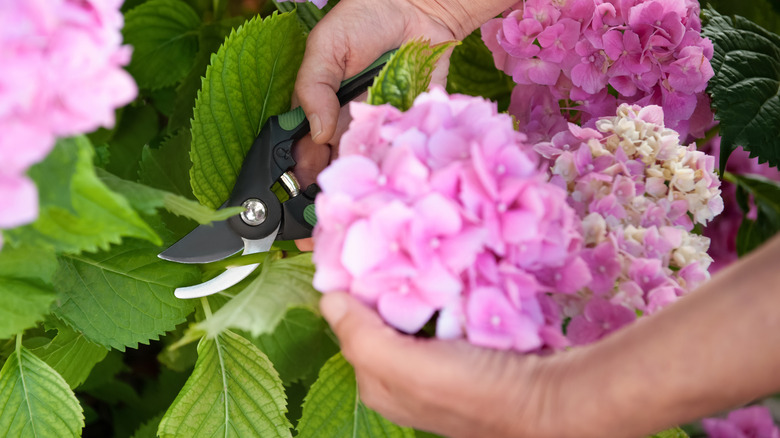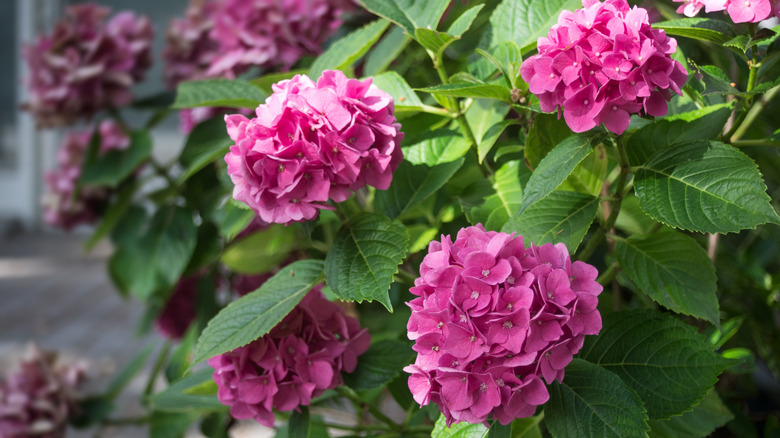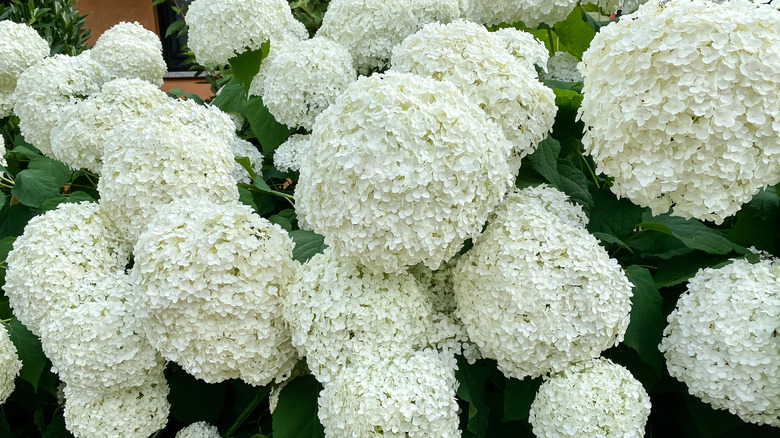The Pruning Mistake That Could Cost You Next Year's Hydrangea Blooms
Hydrangeas are unique flowers that add a touch of elegance to any garden or facade of a home. They can range from vibrant blues and purples in acidic soil to soft pinks and whites in alkaline soil. This color-changing characteristic makes hydrangeas a captivating and versatile choice for landscaping. Additionally, their large, showy blooms create a stunning visual impact, while their lush foliage provides a backdrop of greenery. With their beauty and adaptability, hydrangeas truly enhance the aesthetic appeal of any outdoor space, and careful pruning is vital to bringing out their best.
That being said, when it comes to pruning hydrangeas, you should be purposeful before going full-blown Edward Scissorhands with your garden shears. Haphazard pruning can lead to a lack of blooms in subsequent years as the plant recovers in the following season. Many hydrangeas only bloom on older branches, so if they're cut too far back or removed completely, you'll likely have to wait a year or two in order to see the blooms return to your yard.
How to prune old wood bloomers
There are four main varieties of hydrangeas that bloom on old wood: mophead hydrangeas, mountain hydrangeas, oakleaf hydrangeas, and climbing hydrangeas. Pruning these varieties requires careful attention to ensure that the plant will continue to bloom in subsequent years. For mophead and mountain hydrangeas, it is best to prune them immediately after they finish blooming. This gives the plant enough time to develop new buds on the old wood for the following year's blooms. When pruning, remove any dead or damaged wood, as well as any weak or crossing branches. It is important not to cut the plant back too far, as this can remove the buds that will produce the next year's flowers.
Oakleaf hydrangeas and climbing hydrangeas should also be pruned after they finish blooming. It is important to note that oakleaf hydrangeas do not require heavy pruning and can be left to grow naturally, while climbing hydrangeas can grow out of control if left alone. For both varieties, it's important to avoid heavy pruning, as this can reduce the number of blooms. Instead, focus on removing any unwanted growth and shaping the plant. Also, determine if the wood is dead by gently scratching the stem; if the plant is green under the wood, then it's still alive and should be left alone.
How to prune new wood bloomers
Several varieties of hydrangeas bloom on new wood, meaning they produce flowers on the current season's growth. These varieties include the panicle hydrangeas, smooth hydrangeas, and the endless summer hydrangeas. Pruning these hydrangeas is relatively straightforward and can be done in early spring. For panicle hydrangeas, it is best to prune them in late winter or early spring before new growth begins. Start by removing any dead or damaged wood, as well as any weak or crossing branches. To encourage more blooms, you can also selectively prune some of the older stems back to the ground. This will stimulate new growth and result in a fuller plant with more flowers.
Smooth hydrangeas should also be pruned in late winter or early spring. Begin by cutting the entire plant back to about six to twelve inches above the ground. This hard pruning will promote vigorous new growth and ensure abundant blooms in the coming season. Endless summer hydrangeas can be pruned in a similar manner to panicle hydrangeas. For any variety, it's best to prune no more than one-third of the plant each season to encourage new growth but avoid shocking it.


